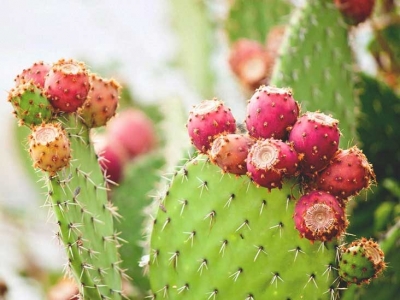
The prickly pear grows wild in warm Mediterranean regions. It anchors itself to rocky, barren slopes and forms large areas of scrub that grow to about 3 meters high. On cultivated land the prickly pear is often cultivated as a hedge. It is enough to plant just one leaf for a whole bushy shrub to start growing.
‘Leaf is not really the correct word to describe the green, fleshy vegetation of this plant. The leaves are really parts of the plant’s trunk which measure from 15 to 40 centimeters long and 15 centimeters wide.
The actual leaves of the prickly pear are very small and are shed almost as soon as they have appeared on the plant. They leave behind them thick tufts of thin needles. One of these needles grows outwards and becomes very sharp.
Since the prickly pear has no leaves the task of producing chlorophyll, without which no plant can live, is carried out by the trunk.
The prickly pear was introduced into Australia at the end of the eighteenth century as a food plant for cochineal insects. It spread and by 1870 had become a pest in Queensland and New South Wales. Its growth was controlled by the introduction of a little moth, the cactoblastis
Picture Credit : Google

